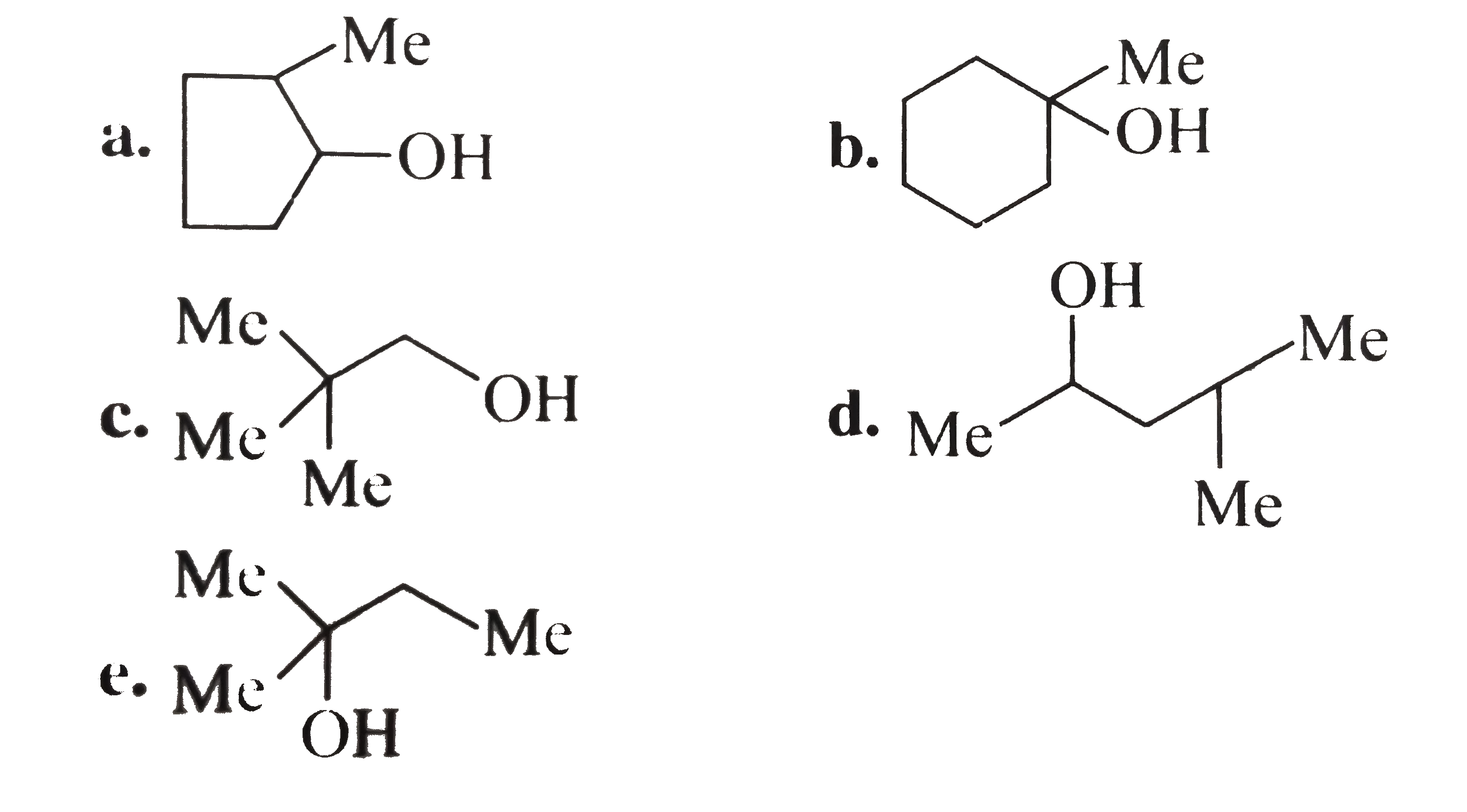Indicate the following as 1∘,2∘, and 3∘

a. 2∘
b. 3∘
c. 1∘
d. 2∘
e. 3∘
Topper's Solved these Questions
- CLASSIFICATION AND NOMENCLATURE OF ORGANIC COMPOUNDSBOOK - CENGAGE CHEMISTRY ENGLISHCHAPTER - CLASSIFICATION AND NOMENCLATURE OF ORGANIC COMPOUNDSEXERCISE - Concept Application Type
7 Videos
- CLASSIFICATION AND NOMENCLATURE OF ORGANIC COMPOUNDSBOOK - CENGAGE CHEMISTRY ENGLISHCHAPTER - CLASSIFICATION AND NOMENCLATURE OF ORGANIC COMPOUNDSEXERCISE - Linked Comprehesion Type
12 Videos
- CLASSIFICATION AND NOMENCLATURE OF ORGANIC COMPOUNDSBOOK - CENGAGE CHEMISTRY ENGLISHCHAPTER - CLASSIFICATION AND NOMENCLATURE OF ORGANIC COMPOUNDSEXERCISE - Solved Example
5 Videos
- CHEMICAL EQUILIBRIUMBOOK - CENGAGE CHEMISTRY ENGLISHCHAPTER - CHEMICAL EQUILIBRIUMEXERCISE - Subjective type
1 Videos
- GENERAL ORGANIC CHEMISTRYBOOK - CENGAGE CHEMISTRY ENGLISHCHAPTER - GENERAL ORGANIC CHEMISTRYEXERCISE - Analytical and Descriptive
1 Videos
Similar Questions
Knowledge Check
Which atom (X) is indicated by the following configuration?
X→[Ne]3s23p3ANitrogenBChlorineCPhosphorusDSulphur
Find the following:
23+13+1
View SolutionIndicate the following by using integers: (i) 3km above sea level (ii) 2 km below sea level
View Solution(i) Write the electronic configurations of the following ions:
(a) H−(b)Na+(c)O2−(d)F−
(ii) What are the atomic numbers of elements whose outermost electrons are represented by
(a)3s1(b)2p3and(c)3p5?
(iii) Which atoms are indicated by the following configurations?
(a)[He]2s1(b)[Ne]3s23p3(c)[Ar]4s23d1.
View SolutionWhich atoms are indicated by the following configuration?
[Ar]4s23d1
View Solutioni. Write the electronic configurations of the following ions:
a. HΘ, b. Na⊕, c. O2−, d. FΘ
ii. What are the atomic numbers of elements whose outermost electrons are represented by
a. 3s1, b. 2p3, c. 3p5?
iii. Which atoms are indicated by the following configurations?
a. [He]2s1, b. [Ne]3s23p3, c. [Ar]4s23d1
View SolutionEvaluate the following ∣∣ ∣ ∣∣111a2b2c2a3b3c3∣∣ ∣ ∣∣
View SolutionIndicate the correct match in the following
View Solution


